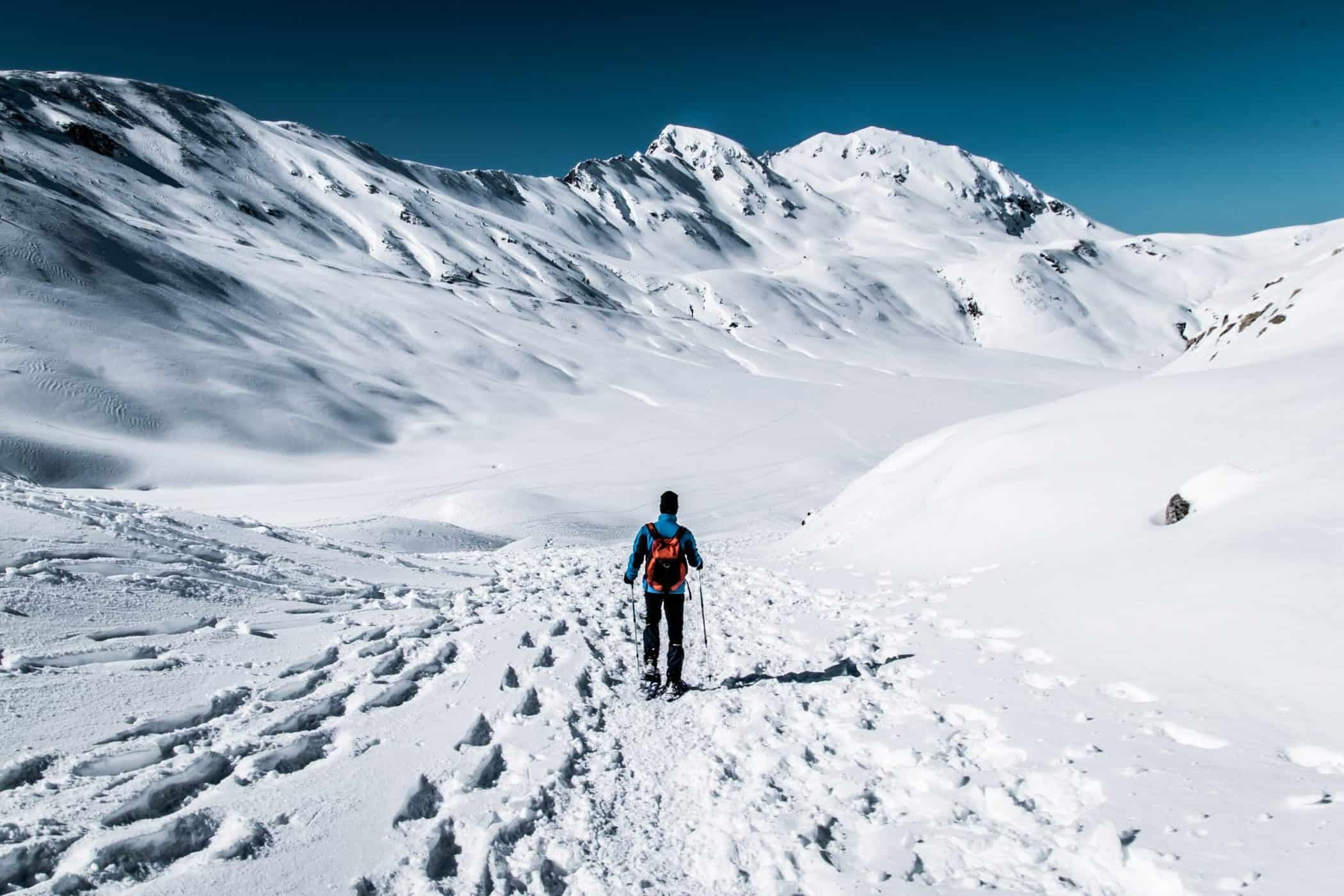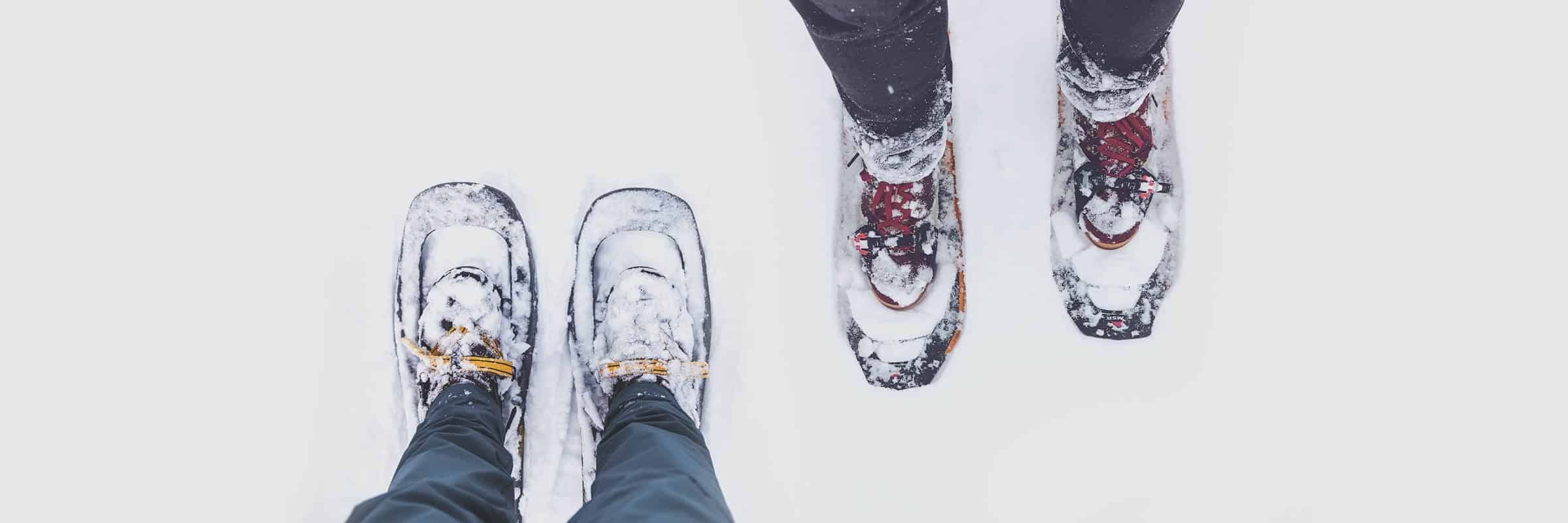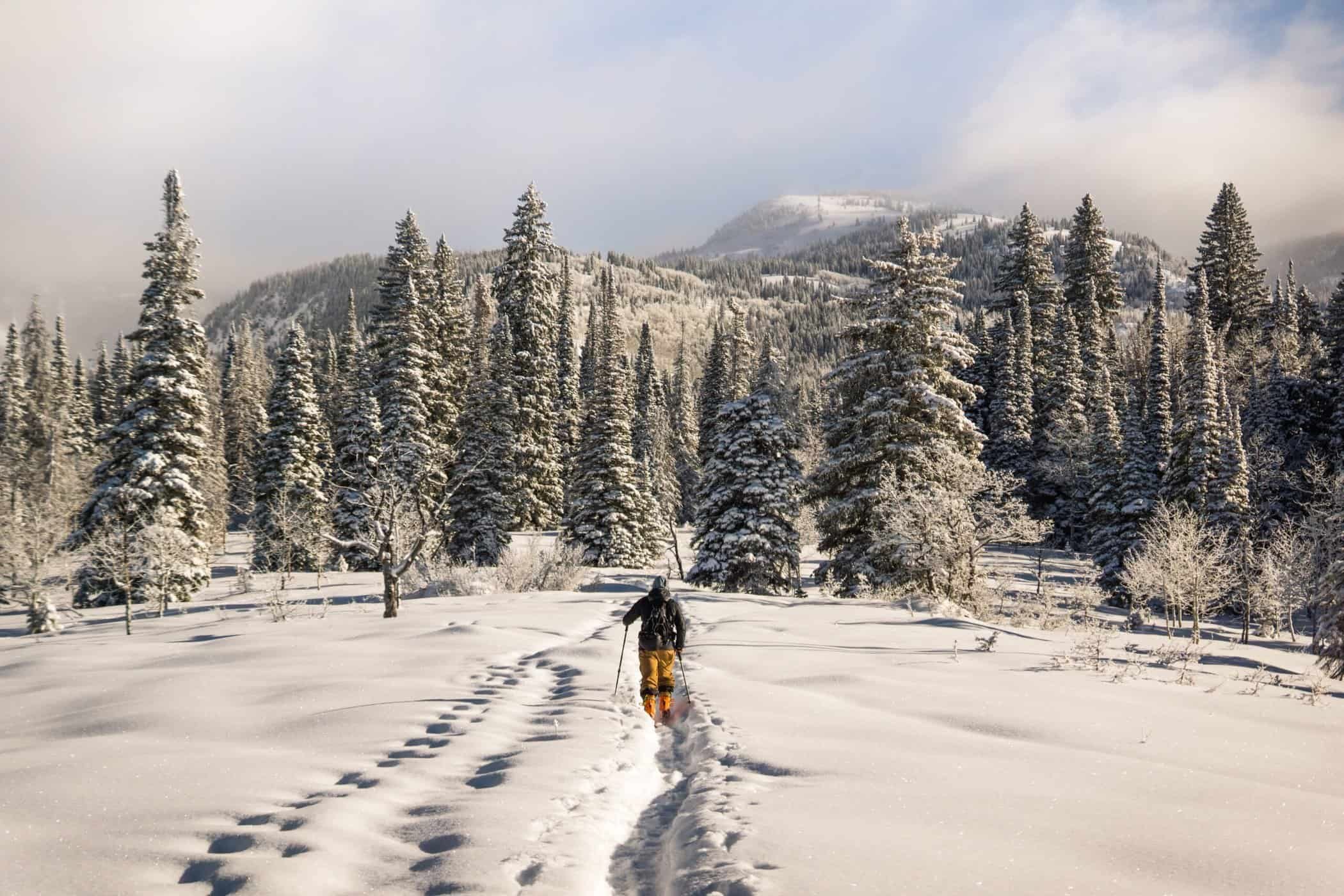With the forecast announcing snow, conditions will soon be ideal to strap on your snowshoes and head out on an adventure. For beginners, finding the best snowshoes among all those available on the market can be a little daunting. Especially since the models offered nowadays are more specialized. You can leave the huge wooden babiche classics behind. Snowshoes have greatly evolved from a technical standpoint and are specialized according to specific types of activities. For the uninitiated, the choice can be overwhelming.
Our snowshoe guide rounds up our best snowshoes by activity and explains what to keep in mind when choosing your snowshoes.
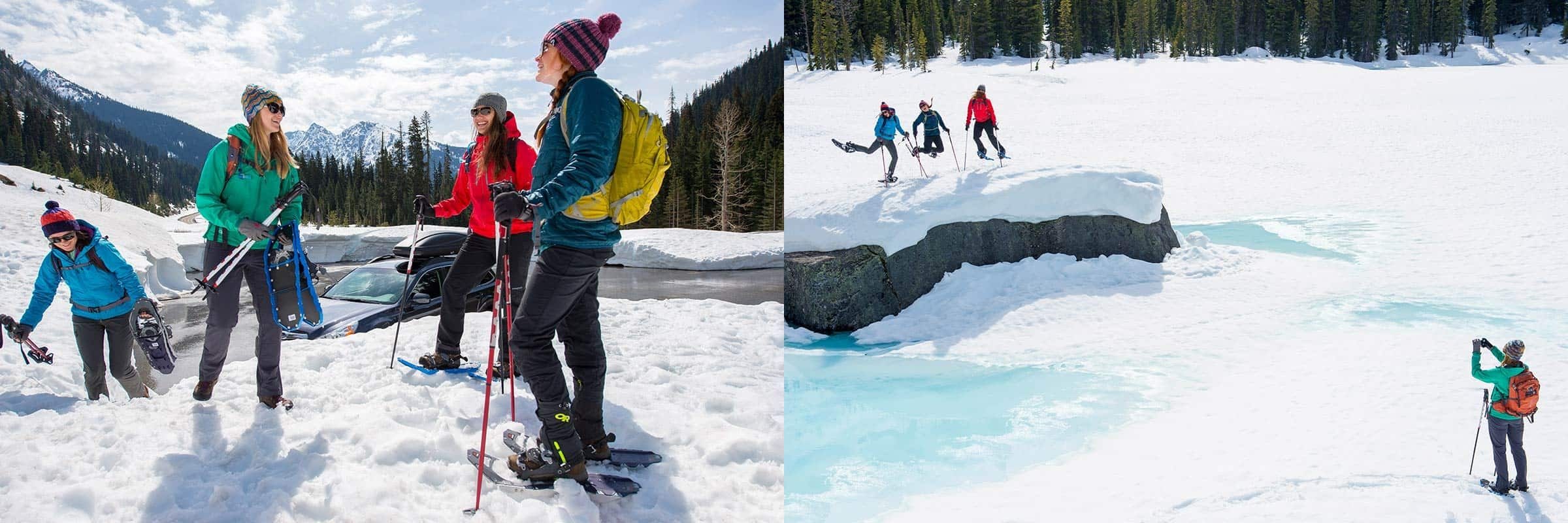
The Best Snowshoes
Finding the right snowshoes for you will depend on the activity you’ll be doing. There are many types of snowshoes, so it’s important to decide how you will be using them before setting your sight on a specific model. Here is a list of our top snowshoes:
- Best overall: GV Mountain Extreme
- Best for trails: Atlas Helium All Mountain
- Best for beginners: GV Winter Trail Spin
- Best for racing: Atlas Race
- Best for variable terrain: TSL Highlander Elite
- Best for kids: Tubbs Storm
Best Snowshoes Overall
GV | Snowshoe
Mountain Exteme Snowshoes - Unisex
Price: 229.99$
Among the best available on the market, the Mountain Extreme snowshoe by GV is equipped with the latest technologies offered by the brand. Ideal for most terrains, especially mountains, this performance snowshoe offers excellent traction on rugged terrain. Durable, resistant and efficient on ascents thanks to its crampons and flexible aluminum frame, these comfortable snowshoes offer a perfectly stable and aligned stride.
Price: 229.99$
- Lorem ipsum dolor<\/li>
- Lorem ipsum dolor<\/li>
- Lorem ipsum dolor<\/li><\/ul>","_id":"2531529"},{"feature":"
- Lorem ipsum dolor<\/li>
- Lorem ipsum dolor<\/li>
- Lorem ipsum dolor<\/li><\/ul>","_id":"5c33bc8"}],"single_product_id":"","cta_1_url":{"url":"https:\/\/www.altitude-sports.com\/products\/gv-mountain-exteme-snowshoes-unisex-llll-gvc-5667","is_external":"on","nofollow":"","custom_attributes":""},"cta_2_url":{"url":"","is_external":"","nofollow":"","custom_attributes":""},"credit":null,"limit":null,"collection_link":null}
best snowshoes for trails
The ultimate hiking snowshoe has to be the Helium All Mountain by Atlas. It's particularly efficient on hilly terrain and adapts to every type of condition. These snowshoes can be used with a wide range of footwear and strap on easily. We particularly like the fact that the traction rails adjust to all types of terrain. Equipped with biting crampons, this unisex snowshoe offers maximum performance for trail snowshoeing.
Price: 259.99$
Atlas | Snowshoe
- Lorem ipsum dolor<\/li>
- Lorem ipsum dolor<\/li>
- Lorem ipsum dolor<\/li><\/ul>","_id":"614a6d1"},{"feature":"
- Lorem ipsum dolor<\/li>
- Lorem ipsum dolor<\/li>
- Lorem ipsum dolor<\/li><\/ul>","_id":"f9a2c24"}],"single_product_id":"","cta_1_url":{"url":"https:\/\/www.altitude-sports.com\/products\/atlas-helium-all-mountain-26-inches-snowshoes-unisex-llll-atl-u200101301260","is_external":"on","nofollow":"","custom_attributes":""},"cta_2_url":{"url":"","is_external":"","nofollow":"","custom_attributes":""},"credit":null,"limit":null,"collection_link":null}
Best Snowshoes for Beginners
These snowshoes perform well in various snow conditions. The Winter Trail Spin by GV are both light and robust thanks to their aluminum frame. This performance snowshoe is a good fit for beginners due to its ease of use. The Spin bindings and soft pivoting action make them versatile and particularly good for hiking in powdery snow.
Price: 175.99$
GV | Snowshoe
- Lorem ipsum dolor<\/li>
- Lorem ipsum dolor<\/li>
- Lorem ipsum dolor<\/li><\/ul>","_id":"f9b7814"},{"feature":"
- Lorem ipsum dolor<\/li>
- Lorem ipsum dolor<\/li>
- Lorem ipsum dolor<\/li><\/ul>","_id":"c3e3c38"}],"single_product_id":"","cta_1_url":{"url":"https:\/\/www.altitude-sports.com\/products\/gv-mens-winter-trail-spin-snowshoes-llll-gvc-5736","is_external":"on","nofollow":"","custom_attributes":""},"cta_2_url":{"url":"","is_external":"","nofollow":"","custom_attributes":""},"credit":null,"limit":null,"collection_link":null}
best racing showshoes
This is the racing snowshoe that the snowshoe racers run in. The Atlas Race by Atlas are some of the best on the market, and can adapt to any sort of snowshoeing. The SLS suspension provides stability on uneven terrain. Ultra-light, with titanium crampons, the Atlas Race is as suitable for beginners as it is for elite athletes.
Price: 349.99$
Atlas | Snowshoe
- Lorem ipsum dolor<\/li>
- Lorem ipsum dolor<\/li>
- Lorem ipsum dolor<\/li><\/ul>","_id":"7837100"},{"feature":"
- Lorem ipsum dolor<\/li>
- Lorem ipsum dolor<\/li>
- Lorem ipsum dolor<\/li><\/ul>","_id":"c9231f5"}],"single_product_id":"","cta_1_url":{"url":"https:\/\/www.altitude-sports.com\/products\/atlas-atlas-race-unisex-llll-atl-u1201010","is_external":"on","nofollow":"","custom_attributes":""},"cta_2_url":{"url":"","is_external":"","nofollow":"","custom_attributes":""},"credit":null,"limit":null,"collection_link":null}
best snowshoes for variable terrain
Flexibility is the name of the Highlander Elite game by TSL. The snowshoe is built to conform to the terrain around it, with a Rocker step designed to mimic the natural roll of the barefoot step, a flexible binding, and adjustability on pretty much any past of the snowshoe. Better yet, a memory lock system 'remembers' the front volume of the shoe. It's all about a glide in your stride with the Highlander Elite.
Price: 279.99$
TSL Outdoor | Snowshoe
- Lorem ipsum dolor<\/li>
- Lorem ipsum dolor<\/li>
- Lorem ipsum dolor<\/li><\/ul>","_id":"8edf93c"},{"feature":"
- Lorem ipsum dolor<\/li>
- Lorem ipsum dolor<\/li>
- Lorem ipsum dolor<\/li><\/ul>","_id":"ed8f6b3"}],"single_product_id":"","cta_1_url":{"url":"https:\/\/www.altitude-sports.com\/products\/tsl-outdoor-highlander-elite-snowshoes-llll-tsl-highlander-elite","is_external":"on","nofollow":"","custom_attributes":""},"cta_2_url":{"url":"","is_external":"","nofollow":"","custom_attributes":""},"credit":null,"limit":null,"collection_link":null}
best snowshoes for kids
The snowshoe to initiate your kid to the world of snowshoeing. The Storm by Tubbs is designed for kids ages 6 to 10. Ease of use is paramount here, with an ankle-based Quicklock stability system making them simple. Underneath, smaller-sized crampons let your child wander inclines and declines safely and securely.
Price: 79.99$
TUBBS | Snowshoe
- Lorem ipsum dolor<\/li>
- Lorem ipsum dolor<\/li>
- Lorem ipsum dolor<\/li><\/ul>","_id":"1dd5939"},{"feature":"
- Lorem ipsum dolor<\/li>
- Lorem ipsum dolor<\/li>
- Lorem ipsum dolor<\/li><\/ul>","_id":"14df3c0"}],"single_product_id":"","cta_1_url":{"url":"https:\/\/www.altitude-sports.com\/products\/tubbs-storm-girls-19-llll-tub-x160103901190","is_external":"on","nofollow":"","custom_attributes":""},"cta_2_url":{"url":"","is_external":"","nofollow":"","custom_attributes":""},"credit":null,"limit":null,"collection_link":null}
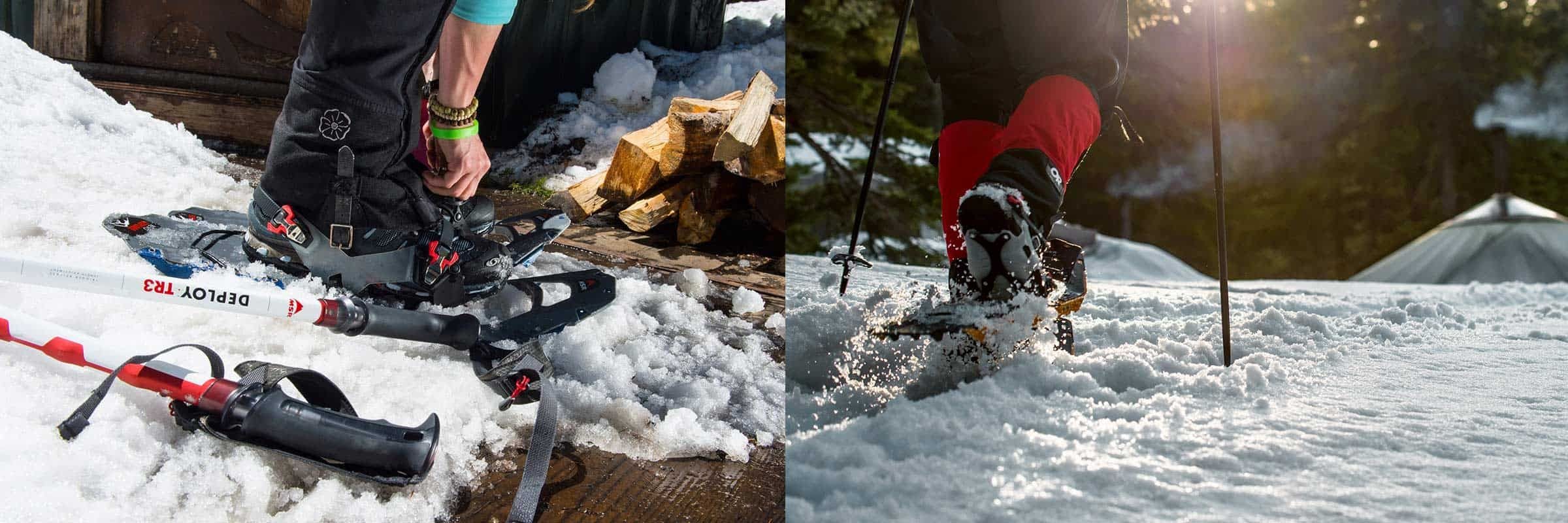
how to choose the right snowshoes
Choosing the right snowshoes involves taking into account its components, the type of snowshoe, its size, as well as the accompanying accessories.
Types of Snowshoes
Among the most popular are walking and hiking snowshoes for trails, mountain snowshoes and running snowshoes.
Trail snowshoes: Designed for marked trails and packed snow, walking snowshoes are suited for flat terrain. Ideal for beginners or those who go snowshoeing occasionally, these models are easy to use and available at an accessible price point. Their traction system is limited but allows you to go up a few hills.
Mountain snowshoes: Designed to maximize your grip on difficult terrain. They are robust and can be worn with warm, technical winter boots. These are designed to climb and are perfect for icy and steep terrain. If most mountain snowshoes have impressive front and back crampons, some models have a second set of side teeth for even more bite.
Running snowshoes: They are gaining popularity in Canada! Adapted to flat or groomed terrain, running snowshoes offer less flotation. Short, narrow and asymmetrical, they are mainly designed to allow a fast and fluid stride.
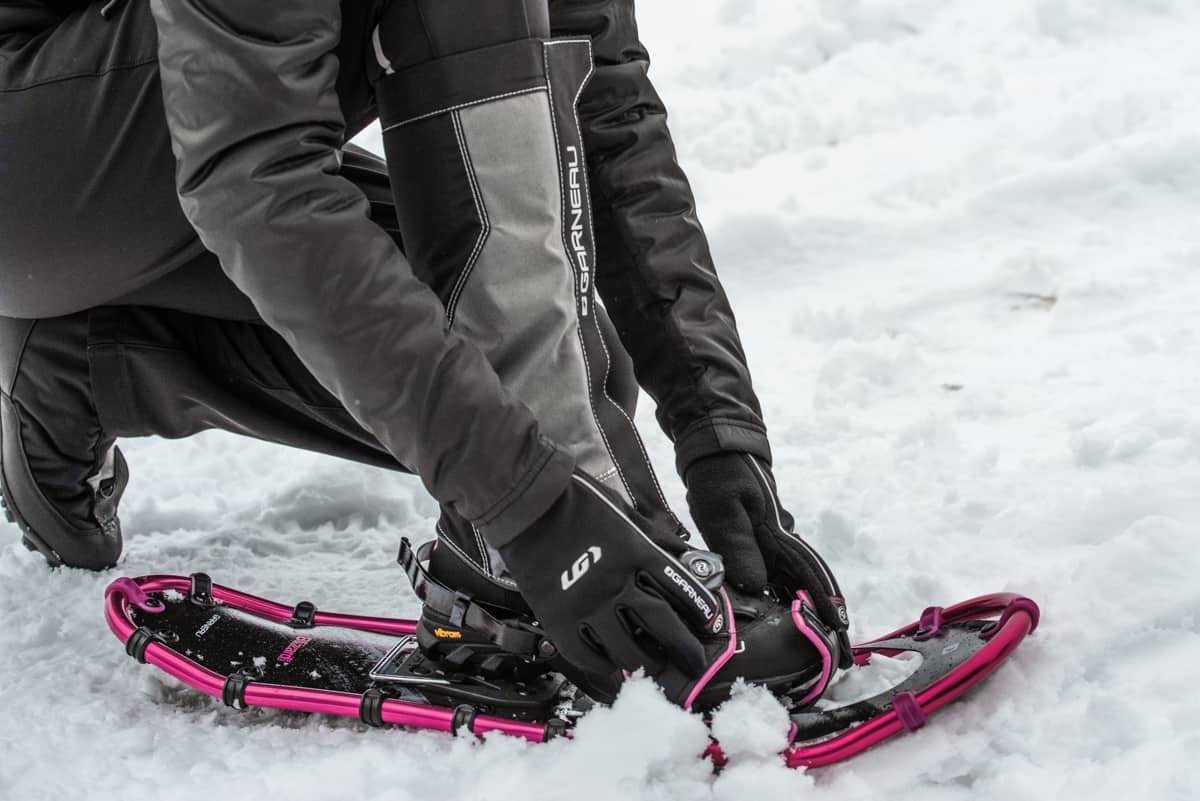
Understanding Binding Systems
Binding systems can make all the difference. It’s particularly important to think about which boots you will be wearing when you go snowshoeing. Most snowshoes designed for tall mountains have large, resistant straps. On the flip side, running snowshoes are designed to accommodate lighter footwear.
The binding system is what keeps your foot in place on the snowshoe. There are two types:
Fixed rotation system: With flexible straps attached to the frame, this system ensures that the back of the snowshoe lifts very slightly during the stride. It helps to better absorb shocks and make precise steps, making it a perfect system for running or hiking snowshoes.
Articulated rotation system: Equipped with a pivot located at the front of the foot, this system makes it possible to tackle deep snow and rough terrain. It is usually found on mountain snowshoes.
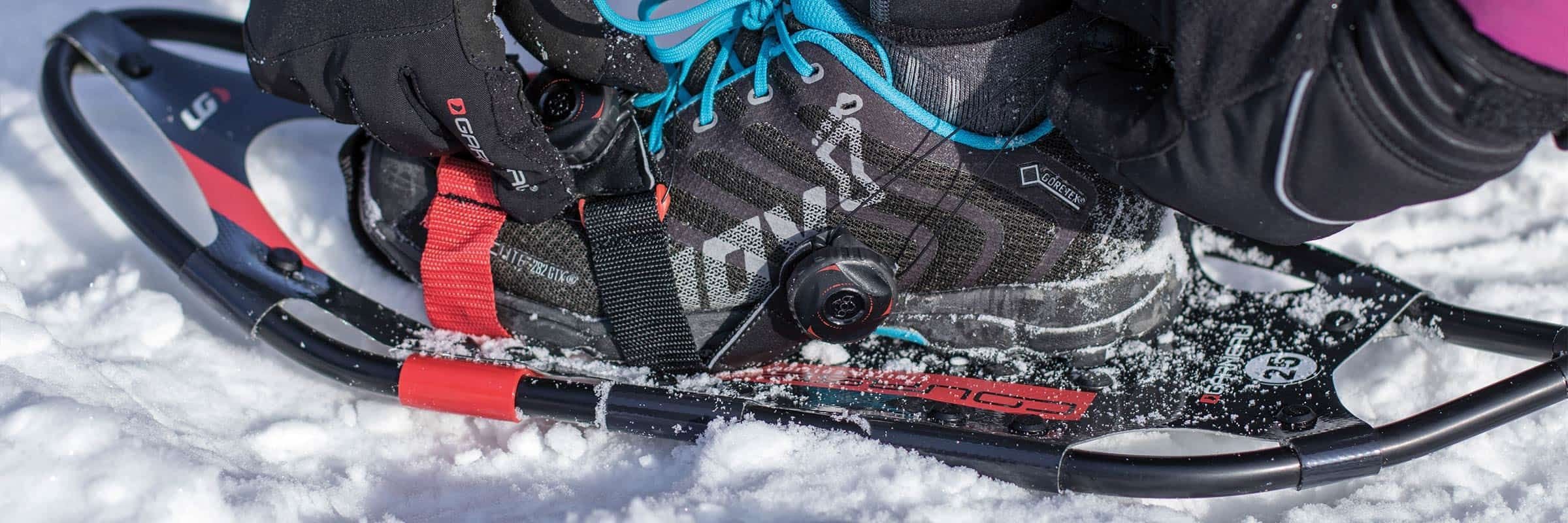
snowshoes faq
How do I find the right size of snowshoe?
The right size is directly related to your weight: the heavier you are, the larger your base needs to be.
Narrow snowshoes (about 20 cm wide) are designed for fluidity of movement (running snowshoes, etc.) and are best used for flat or groomed terrain. Larger snowshoes (about 25 cm wide) provide better flotation for walking in deep snow.
As for length, it depends on you. In fact, the length of a snowshoe is directly related to your weight. The heavier you are, the larger it will need to be in order to keep you above the snow.
Can I use my winter boots on my snowshoes?
Short answer: yes! Winter hikers especially are well-suited to snowshoes. There aren't any snowshoe-specific boots, so unless you've gone ultra-urban high heels, you should be fine with your regular winter boots or hikers on a pair of snowshoes.
You can read up about the best snowshoe boots here.
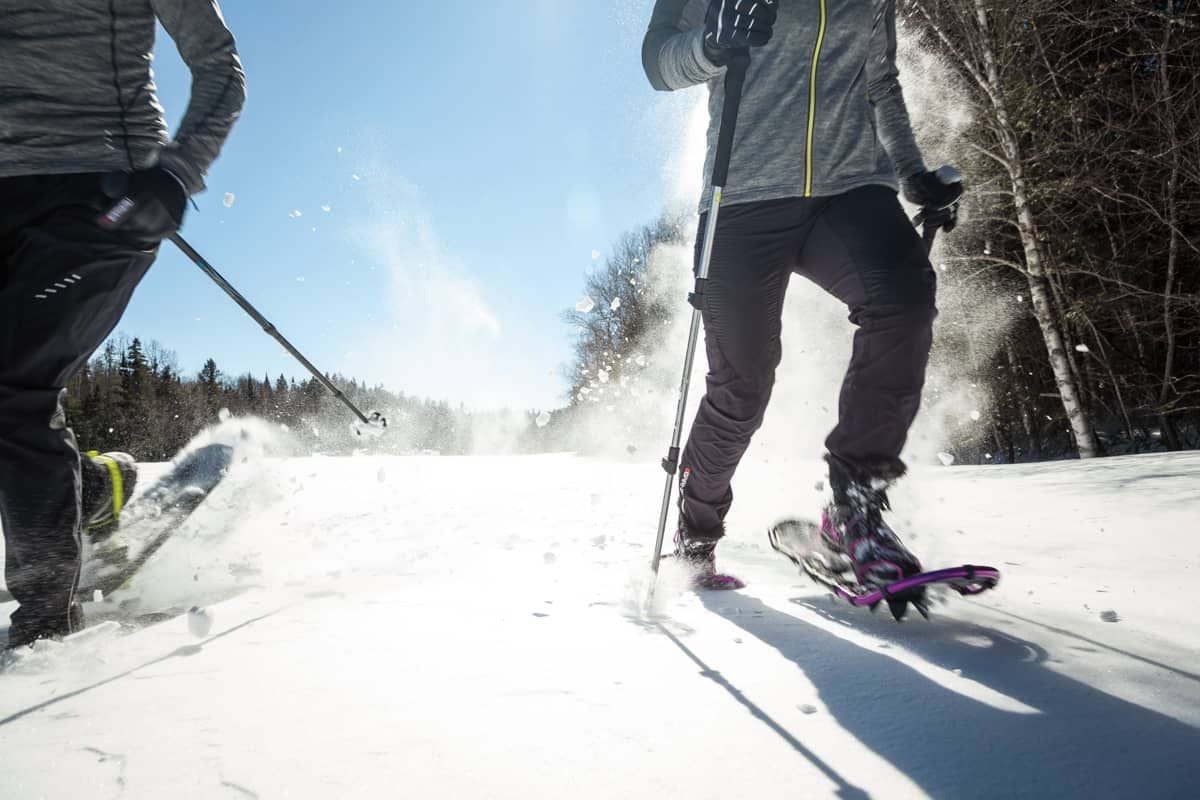
Found the snowshoes of your dreams? Now you just need a place to try them out! Ever-increasing in popularity, snowshoeing gives you access to a truly undiscovered part of the world—nature in winter, off the beaten path. It’s also great to change things up, fantastic physical exercise, and a real stress relief.





















